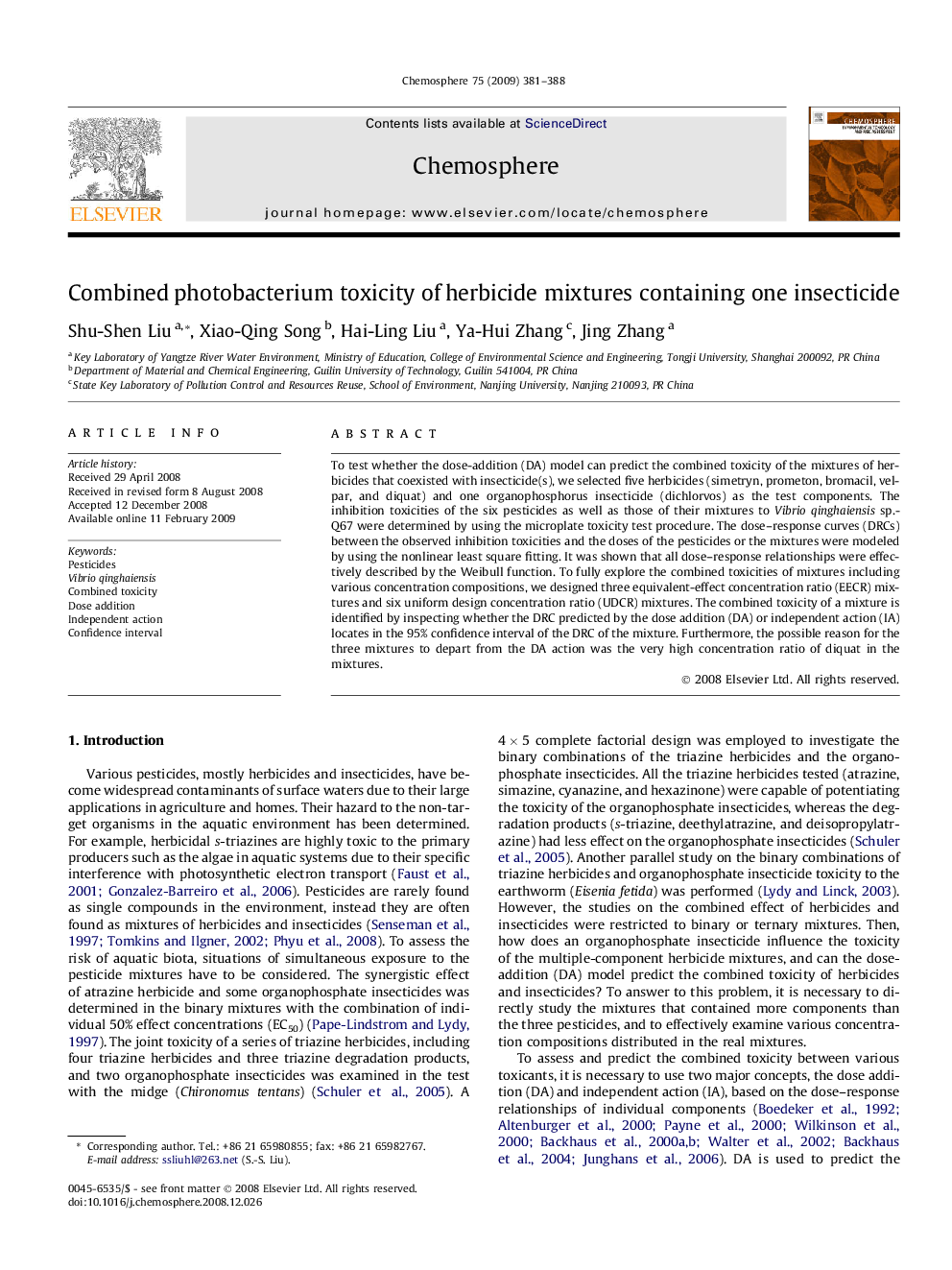| Article ID | Journal | Published Year | Pages | File Type |
|---|---|---|---|---|
| 4413249 | Chemosphere | 2009 | 8 Pages |
To test whether the dose-addition (DA) model can predict the combined toxicity of the mixtures of herbicides that coexisted with insecticide(s), we selected five herbicides (simetryn, prometon, bromacil, velpar, and diquat) and one organophosphorus insecticide (dichlorvos) as the test components. The inhibition toxicities of the six pesticides as well as those of their mixtures to Vibrio qinghaiensis sp.-Q67 were determined by using the microplate toxicity test procedure. The dose–response curves (DRCs) between the observed inhibition toxicities and the doses of the pesticides or the mixtures were modeled by using the nonlinear least square fitting. It was shown that all dose–response relationships were effectively described by the Weibull function. To fully explore the combined toxicities of mixtures including various concentration compositions, we designed three equivalent-effect concentration ratio (EECR) mixtures and six uniform design concentration ratio (UDCR) mixtures. The combined toxicity of a mixture is identified by inspecting whether the DRC predicted by the dose addition (DA) or independent action (IA) locates in the 95% confidence interval of the DRC of the mixture. Furthermore, the possible reason for the three mixtures to depart from the DA action was the very high concentration ratio of diquat in the mixtures.
